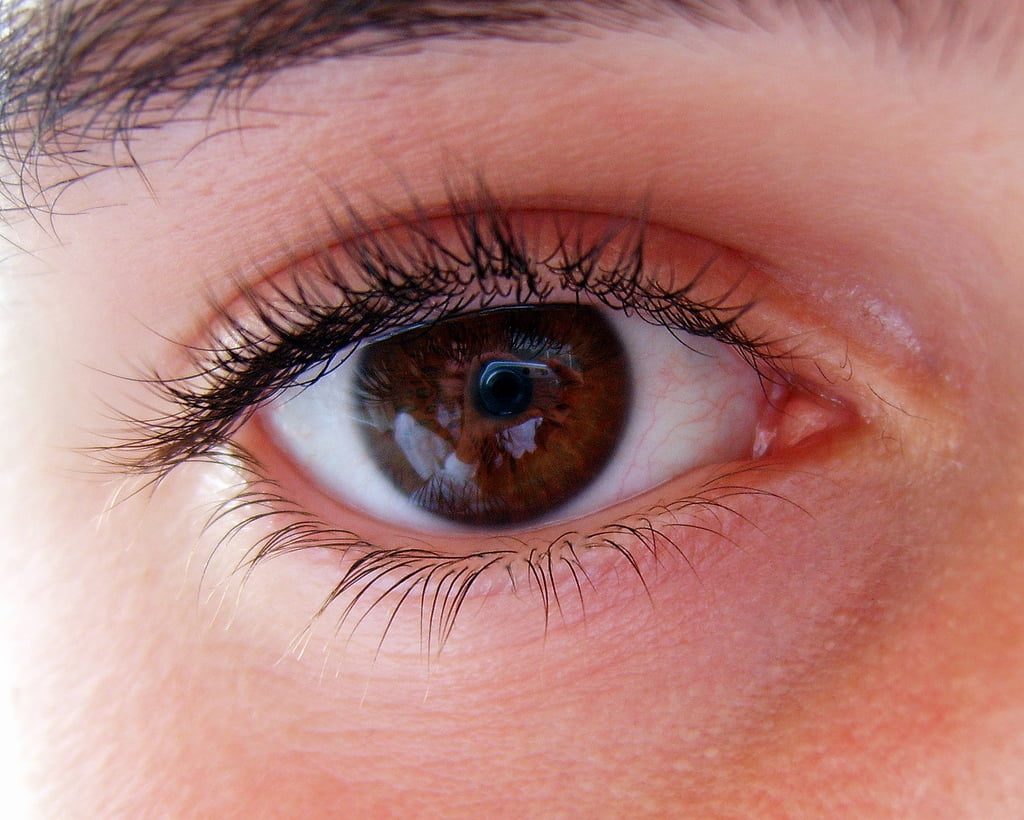When I first found out about EMDR therapy, I was instantly intrigued. I found the concept of a therapy based on a scientific theory really interesting.
EMDR (or Eye Movement Desensitization Reprocessing) is an integrative psychotherapy approach originally used to treat victims of trauma. Integrative psychotherapy brings together elements of different therapy, and is based on the view that a person should be treated as an individual.
EMDR is an evidence-based therapy, and although it was originally developed to treat PTSD (Post Traumatic Stress Disorder), it is used alongside other therapies to help treat other mental health problems, such as depression and anxiety.
I spoke to Dr Deborah Kingston, who explained to me about how EMDR works, and why it is effective.
What science is the therapy based on?
EMDR works on the premise that within each person is a physiological information processing system through which new experiences and information are normally processed to an adaptive state. Information is stored in the memory networks and involves a part of the brain called the hippocampus. However, another part of the brain, the amygdala can disrupt these memory networks and stop the brain processing information.
The amygdala is part of our ‘threat system’ and its job is to keep us safe by alerting us to danger. It does this by setting off an alarm in our body, triggering our ‘fight or flight’ responses and getting us ready to act. The amygdala cannot always discriminate between real dangers ‘out there’ and dangers that we are just thinking about. This means that it can set the alarm off even when we are thinking about an unpleasant memory, even though the danger is no longer there.
The hippocampus helps us store and remember new and fresh information, it stores all our autobiographical memories and files them away so we can retrieve them when required. You could compared it to a librarian – it ‘tags’ our memories with information about when and where they occurred. When our ‘threat system’ is active the hippocampus doesn’t work as well. This means it can forget to tag the memories with time and place information, which means they sometimes get stored in the wrong place, and when we remember them it feels like they are happening again. This can also stop the brain from storing new, positive memories.

So imagine a happy memory now. What could you describe?
That memory consists of doing something, feeling something, and a physical reaction. That sensory imagery is like a photograph. That memory is stored in the hippocampus, the part of the brain that stores autobiographical memories. Trauma memories are stored in a different way.
“Trauma effects the amygdala – this is your fight or flight response. These two get in the way of each other.”
“Evolutionary we’ve got the caveman brain, or reptilian brain, so the amygdala sits at the centre core and overlapping it we’ve got our adult, human brain for example problem solving and reasoning. When the amygdala goes off – this disables our information processing.”
So essentially, because the hippocampus is effected, and disabled, when the amygdala is active, this means the brain with the trauma is stuck in the past, as new memories cannot properly be processed.
“How I explain it to most of my clients is that we’ve got two feet – one of them is in the past and one of them is in the present. But with trauma, the one in the past is stuck in quicksand and every now and again you feel like you’re being dragged under. The foot in the present then can’t stay stable because the other is dragging it down. What EMDR does is pull that foot out, so the brain can actually adapt, because it is no longer trapped.”
“So I have people come in who have been in a crash, and they’ll use the phrase ‘I’m going to die.’ Now that phrase is a present tense comment, but the accident could have been 10 years ago. The brain is locked in to that, so it’s constantly fearing death and danger all the time.”
“In EMDR, as you process that through bilateral stimulation, the brain then says ‘hang on a minute, I didn’t die.’ It catches up on itself and all of a sudden that foot then becomes unstuck. The brain adapts the information, and therefore people can release it. It’s almost like the pain is no longer present because the pain is in the moment of ‘I’m going to die’ or ‘I’m in danger.’”
Can EMDR only be used to treat people with PTSD (post-traumatic stress disorder)?
Although EMDR was developed initially to treat victims of trauma, as an alternative therapy, it can be used in conjunction with other techniques to treat other disorders. EMDR can also be used to build up people who suffer from low self-esteem.
“There are things called ‘big T traumas’ and ‘mini T traumas.’ So ‘big T traumas’ are car accidents, sexual assaults, war. ‘Mini T traumas’ are about what lowers your self-esteem. Slowly sometimes those messages drip-feed, so that erodes somebody’s sense of self, and then they feel worthless. And then worthlessness is a key underpinning cognition for depression. But over time, that becomes a bigger event, and then they just think ‘I’m not good enough.’”
“When I’ve got someone with low self-esteem, I run the EMDR alongside CBT for low self-esteem. I think that’s why I like doing integrative therapy rather than just one mode, because sometimes by layering the therapy, not only do you deal with the history, but you also build them for the future.”
How does it work?
EMDR can have effects very quickly, but it’s important that all eight phases are completed fully.
There is an eight-phase model, and the first phase is assessment, where the person and therapist underpin what it is that they’re going to work on. This includes looking at events, and using a timeline of their life to identify key themes.
“From there, we do a resourcing phase too. That’s where we teach people how to be calm and relaxed. A lot of the time people with trauma are constantly in fight or flight mode – they’ve got a lot of adrenaline in their body and they don’t need it. We do a whole phase on resources which looks at their ability just to tone that hypersensitiveness down. The reason we do that is because when we do the EMDR, it can be highly distressing and if we have not completed the whole event then this can leave the person distressed. Therefore, we want them to leave the session calm because they’ve got to be able to leave this room and feel settled. We use this resource at the end of every session.”
Phase 4-7 is the reprocessing, and this stage can be distressing, because they are actually remembering and dealing with the trauma. Eye movements (or other bilateral stimulation) are used during one part of the session. Once a certain memory is pin-pointed, the client is asked to hold different aspects of that event or thought in their mind and to use their eyes to track the therapist’s hand as it moves back and forth across the client’s field of vision.

As this happens, internal associations arise and clients can then process the memory and disturbing feelings.
“I have buzzers because sometimes people don’t like me being in their personal space. So I stop the buzzers and say – what did you notice? We don’t analyse it, we just notice it. The brain is going to bring up everything that’s not stored in the long term memory effectively.”
“Imagine the trauma memory is like a box on a conveyor belt just going round. Occasionally boxes fall off, the person then may experience a flashback or a feeling of re-living the trauma experience. What we’re doing in EMDR is we’re picking that stuff up off the conveyor belt and dealing with it. And once we’re done then we go back to the original trauma and do it again, and again until the distress has reduced and the memories have integrated effectively. And then we install positive cognition associated with the original trauma e.g. I’m safe now.”
“Phase eight, is were we re-evaluate whether the EDMR was effective and we look for any issues that are left uncovered. What we don’t want to do with EMDR is just leave something, no matter how minimal it is.”
“If you think about a garden, a beautiful flower garden, and you see a weed in it, and you leave the weed and you go away for six months, what’s happened to your flower garden? All the flowers will be dead and the weeds will have taken over. So all the positivity gets drained out of the person. So what we never do is leave one root of a weed even though there might just be a little bit left, but that weed will take root again.”
Recent controversy
EDMR therapy, like anything new, has been met with some controversy. But why?
“There’s a number of reasons, firstly we don’t understand the science behind the bilateral stimulation. But what we have seen from EMDR when we have done pre-neuro scans of the brain is that the hippocampus doesn’t light up in the same way in trauma victims as it does in non-trauma victims. So if you haven’t been traumatized, the hippocampus lights up effectively.”
“Once the person who has been traumatized undergoes EMDR, they re-do the scan and their brain lights up as normal. So something is happening within the brain. But the brain is so complex, we cannot definitively say what is actually occurring.”
“Other people say it’s a bit like hypnosis, which it isn’t. People are very much consciously aware of EMDR and that’s why they can feel the emotional pain. So we’re not looking to hypnotise somebody.”
"EMDR is evidence-based, and is backed up by such evidence. Given the evidence base, the National Institute for health and Clinical Excellence (NICE) have recommended EMDR alongside Trauma Based Cognitive Behavioural Therapy for Trauma. However, for me as a clinician I can see the effects of the therapy first-hand and hear people’s feedback of the therapy process."
“Normally for people with trauma, they can’t see a future, and that’s the thing that really starts to change – people start planning and changing the things that they want to do, and they start having goals that they wouldn’t normally have had. They start being more positive about events that are coming up, maybe even a year down the line, when previously they couldn’t even get to the end of the week or month. And you know it is working because they’re starting to plan living.”
As someone who has seen someone very close to me begin the process of receiving EMDR therapy, it's easy to judge the effectiveness of a new therapy, because those results are happening right in front of you.
Deborah asked me what I thought about the evidence of the theory behind EMDR and, for me, seeing a change in someone I love is evidence enough, especially as other therapies on their own weren't that effective.
I personally think what is so effective about EMDR is that using an integrative approach means that you are treating each person as an individual, which is very important. No one person is the same as another, and we are all made up of different experiences, and using therapies like EMDR amongst other techniques, is one way of adapting to the needs of that individual.









